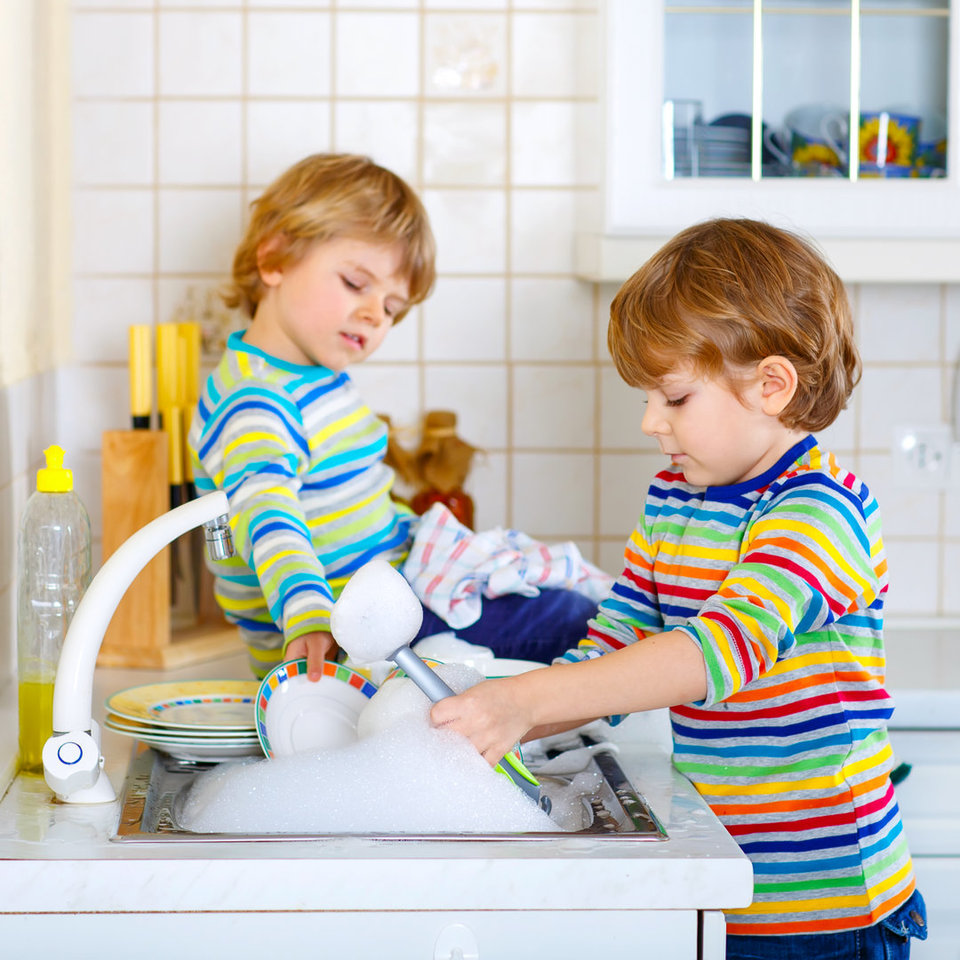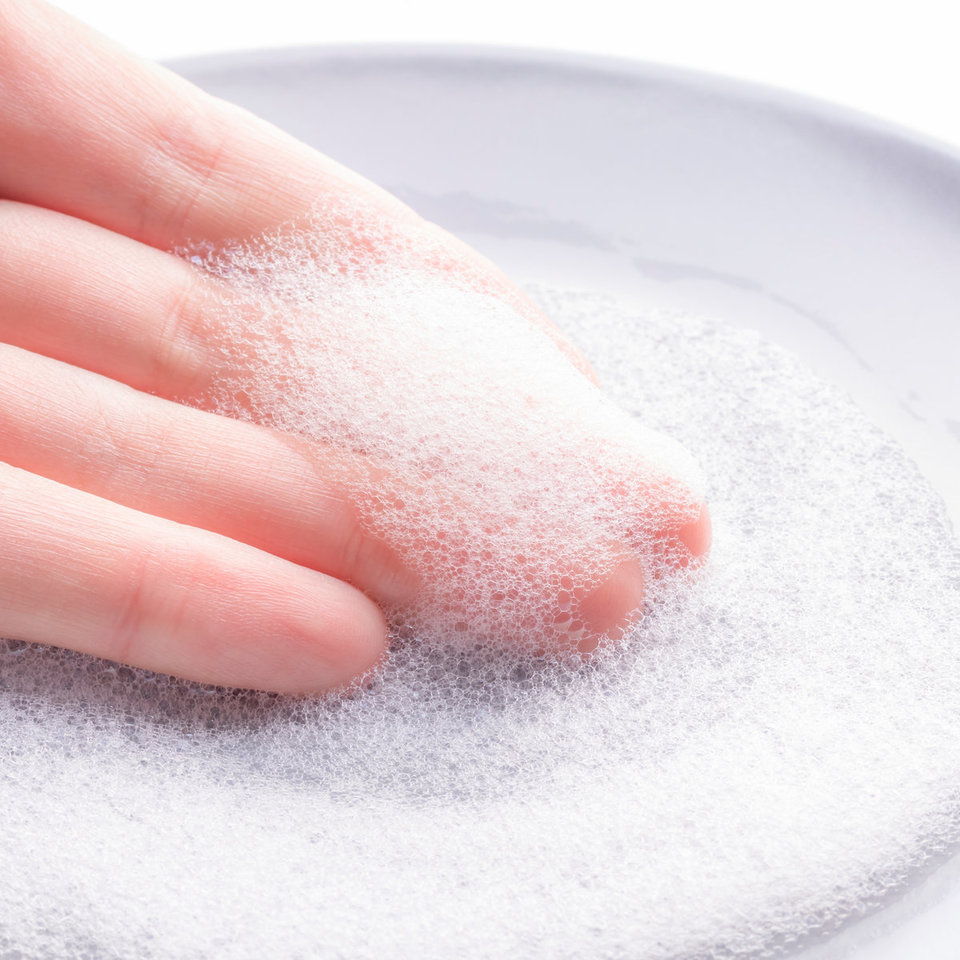What do the bubbles in our dishwashing liquids actually do?
What are bubbles and what is the point?
Washing the dishes: it starts with a squeeze of dish soap, a few swishes of the sponge, followed by a water rinse to get off all those soap suds. But what are the bubbles and why are they there?
Those tiny bubbles in the soap suds are created by foaming agents combining with water and air, but what are they doing when I’m washing the dishes, and do I need loads of bubbles?
Essentially, a washing up liquid, which typically contains alkylbenzene sulphonate as the main detergent, foams strongly at first use and then less as the grease concentration increases in the washing-up water.
However, and here’s the crux of the matter, seeing foam doesn’t mean you’re seeing cleaning power in action. Foam itself offers very little in terms of getting the dishes clean, it’s mostly for aesthetic.
Foam does allow the wetting agents, detergents, and degreasers enough time to do their jobs. Foam allows the cleaning detergent to sit on surfaces for longer, helping to penetrate into grease, oil, fats and other caked on grime. Foam is basically a sidekick to detergents, but grease globules can still slide off the plates if a good wetting agent is present.
So, does foam affect the clean?
 Dishwashing liquids use surfactants to clean your dishes. These compounds break down the surface tension of water which makes it a lot easier for it to dissolve things like fat; they allow cleaning agents to penetrate and dissolve anything on the surface of whatever is being cleaned.
Dishwashing liquids use surfactants to clean your dishes. These compounds break down the surface tension of water which makes it a lot easier for it to dissolve things like fat; they allow cleaning agents to penetrate and dissolve anything on the surface of whatever is being cleaned.
Without suds, people can’t see the soap working, so foam is used as evidence of efficacy, which it is not.
But surfactants and cleaning compounds don’t naturally generate bubbles. Therefore, companies add foaming agents. They believe that we’ll think the dishes are cleaner if we can see bubbles in the sink while we’re washing them.
Television advertisements will often compare the amount of foam in their dishwashing liquid to another to prove that theirs is superior or to imply that the amount of foam reflects the cleaning ability of their product: “with suds that last and last”.
What are foaming agents?
The most commonly used foaming agents are sodium laureth sulfate (SLES), sodium lauryl sulfate (sometimes referred to as sodium dodecyl sulfate or SLS) and coco-glucoside, and these compounds are not free, and nor are they vital for the actual job of cleaning.
While the bubbles these chemicals create are nice to see, they aren’t nice to absorb. Some authorities claim SLS, for example, can be absorbed by skin cells and may lead to rashes and allergic reactions.
It seems to me that foaming agents in dishwasher detergents are more of a marketing tool than a cleaning tool. So, I’m left with a few questions:
- If companies took the same dishing washing liquid and left out the foaming agents, would it work equally as well but cost less money?
- The more foam there is, the more rinsing that needs doing. Does lots of foam actually increase the amount of time spent washing the dishes?
- Do we really need to have the toxic ingredients ending up in our waterways?
Not sure about the bubbles?
We can help. At Insinc, we sell dish washing liquids made from environmentally friendly materials, without all the baddies. Many of these products have Environmental Choice NZ Certification. Feel free to talk to us about how we can help you can incorporate eco-friendly cleaning products at your business. Call 0508 467 462 or you can email us at any time.
Posted: Friday 29 April 2022


